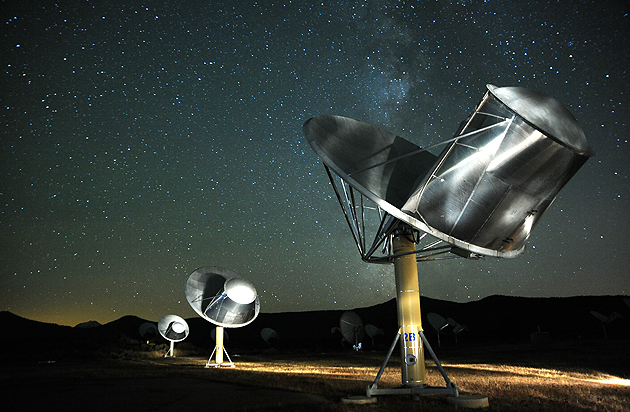
The Breakthrough Initiatives, a program founded in 2015 to search for extraterrestrial intelligence (SETI), recently submitted two papers covering the analysis of its first three years of radio telescope data. Using the Green Bank Telescope in West Virginia, the team searched for evidence of technological activity out among the stars such as radio signals or laser flashes. As a part of the Listen project, a sample of 1702 stars were observed, making this one of the largest such projects in history.
Although the team didn’t find any evidence of alien life yet, there is a reason to take interest in the Breakthrough Listen project: all of the data collected is being made publicly available in an open data archive.
“This data release is a tremendous milestone for the Breakthrough Listen team,” Dr. Danny Price, Breakthrough Listen Project Scientist for Parkes, said in a statement. “We scoured thousands of hours of observations of nearby stars, across billions of frequency channels. We found no evidence of artificial signals from beyond Earth, but this doesn’t mean there isn’t intelligent life out there: we may just not have looked in the right place yet, or peered deep enough to detect faint signals.”
If you want to help out with the search for extraterrestrial life, the Breakthrough Listen project is recruiting the public’s assistance. The data which Price and colleagues examined has now been made publicly available on the project’s website, and can be downloaded in the .csv format.
“It is the team’s hope that the data will be used for other kinds of astronomical investigations in addition to technosignature searches, and also that those with relevant expertise can help the program develop better and faster algorithms to detect and filter potential candidate signals,” a note on the project’s website announced.
This is the first time the project has released this much data, which includes scans of the interstellar asteroid ‘Oumuamua and visual data from the Automated Planet Finder, a robotic telescope at the Lick Observatory in San Jose, California. In total there is nearly 1 petabyte (that’s 1 million gigabytes) of data available, a mammoth trove which you can search through using the Open Data Archive page.



